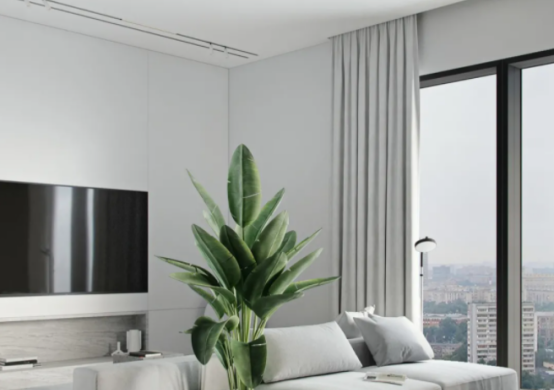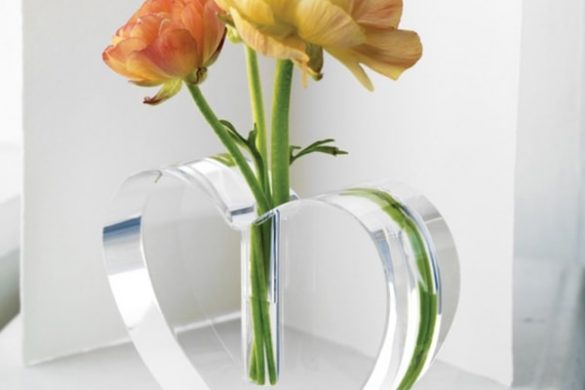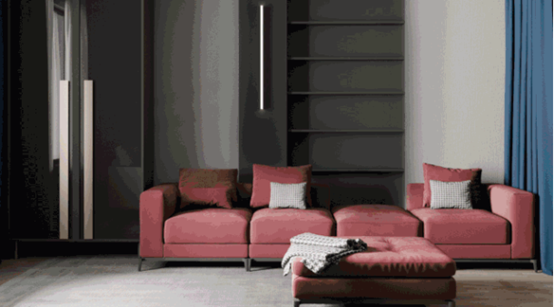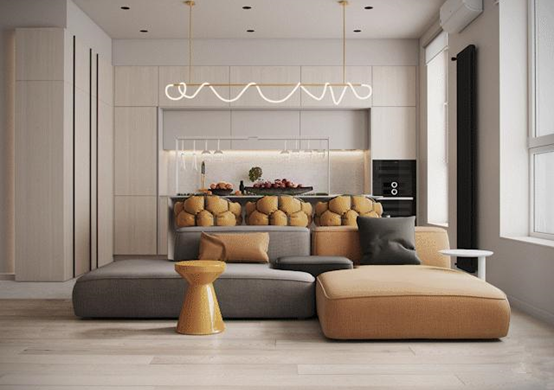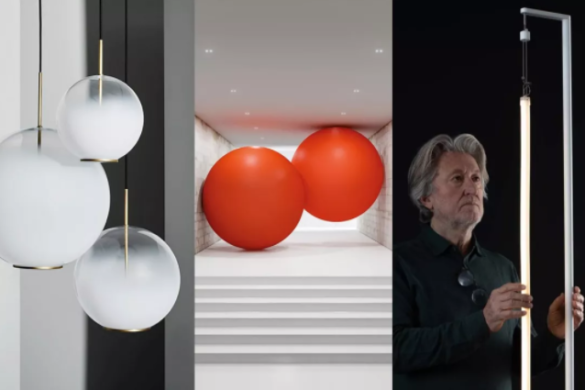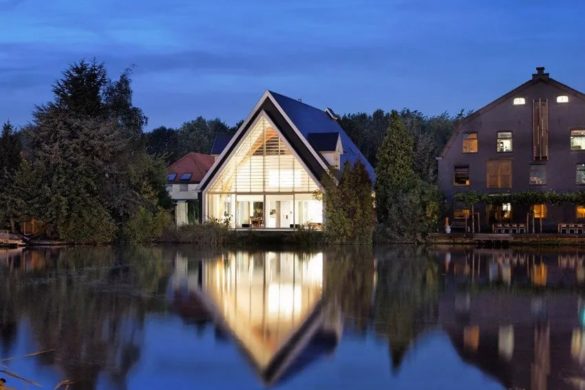History and Renewal
For more than 300 years, during the reign of the Gonzague family in Mantova, the court recruited many prominent artists, from Giulio Romano, painter and architect, to Andrea Mantegna, who created the famous mural Camera degli Sposi in the Ducal Palace.
Like many Italians, the residents in Mantova are surrounded by masterpieces all the time, especially for those who live in the old city center. Their houses are close to Piazza delle Erbe, Piazza Broletto, and Piazza Sordello. With arcades around them, all the buildings bear traces of the old days.
Sara Cozzoli, an archivist, was fortunate enough to be surrounded by history every day. When she found an apartment on the market, she and her husband bought it immediately, even though they didn’t know what to do with it.

▲ A view of the arcades in Piazza Broletto
This apartment sits in a 16th-century building, overlooking Piazza Broletto. “The apartment was so beautiful and we were mesmerized,” she confessed, “We left the house empty for a while and decided to redecorate it so as to bring the visitors the equivalent experience of spending a night or two in an old palace or an art gallery.”

Redecorating isn’t easy: How do you make a room functional without ruining the original style? “We were reassured by our meeting with designer Diego Cisi,” Sara Cozzoli added, “He gave us clear guidance, whether it was to meet the needs of modern living or redecoration itself. Thanks to his detailed suggestions, we were able to come up with some ideas that would both transform the space and preserve its original style.”

▲ Sara Cozzoli sitting on the stairs with her dog Lampo
Light and Shade
This apartment has five rooms and a total area of 80 square meters. Past the narrow hallway, the visitor will see the murals from Renaissance School of Giulio Romano.

▲ The mural showcases the scene of boar hunting in northern Europe
The second largest space in the apartment (a wall removed for expansion) serves as both a living room and a bedroom, with a mural painted on the ceiling between the late 16th and early 17th centuries.

▲ Only the most basic furniture remains under the frescoed ceiling. The bench serves both as a seat and shelving for objects.
For the kitchen and bathroom, “We try to maintain the coexistence of both vintage and modern styles in the apartment, while reaching a balance between them,” explained the designer, “Light and shadow are vague and diverse, which makes them a permanent theme in interior design.”

▲ The end of the room leads to the kitchen on the left. The air conditioner is covered by wooden clapboards.
Everything is custom made according to the environment. The furniture is made mostly of ash and birch, and most of the lamps are made of wood too. “We think natural materials are particularly suitable for interior decoration,” says Diego Cisi.

▲ The double bed is placed in the extension of the living room, behind a custom-made piece of furniture that also acts as a partition.
From the form and material chosen, this apartment features harmony between the traditional intricate style and minimalism, which is the most surprising aspect of the renovation.
The restaurant is painted light green, like “a reflection of the fresco color,”the designer said. “It’s modern, but it’s the same color as the fresco.”

▲ All the decorations and furniture in the dining room are designed by Archiplan studio. The Efelidi table is presented by Design Mood and the chairs are made by local carpenters. Hanging lamps consist of bare bulbs that illuminate the murals. There’s also an LED strip that illuminates the desktop.

▲ On the radiator is a late-18th-century portrait which belongs to family collection
Another design highlight is the exposed copper pipes, which shows respect for unbreakable original structure. As Diego Cisi explains, “Designed in such a way can not only avoid damage to old walls but also turn functionality into good looks.”

▲ The deliberately exposed copper pipes in the bathroom is a simple but brilliant design. The Strammer Max stool is designed by German designer Nils Holger Moormann and presented by Max Frommeld.

▲ The sofa is designed as “A piece of furniture with a wide armrest on which to work, eat and lie down”. Painting by Damiano Groppi
Respect Ancient Architecture In Modern Minimalism
The Mantova designer, Diego Cisi, founded Archiplan Studio with Stefano Gorni Silvestrini. The studio has achieved over the years public buildings, private, residential, and commercial. It is also active in the field of interior design and reconstruction.

▲ Archiplan Studio
Diego Cisi often needs to find practical solutions for ancient architecture. It is an art to match modernism with historic sites.

▲ RJ House by Archiplan Studio

▲ G House by Archiplan Studio

▲ ESTIVA House by Archiplan Studio



